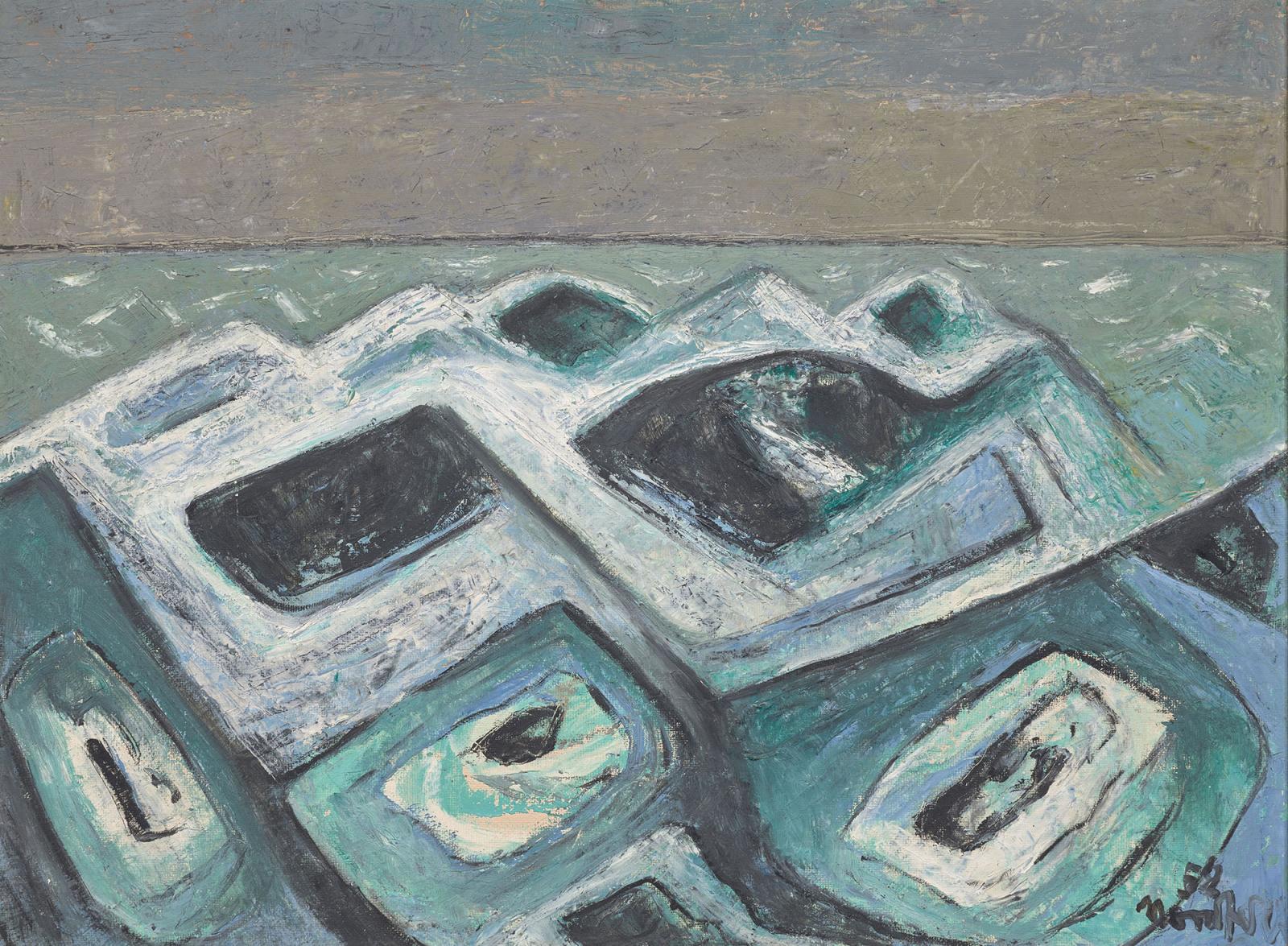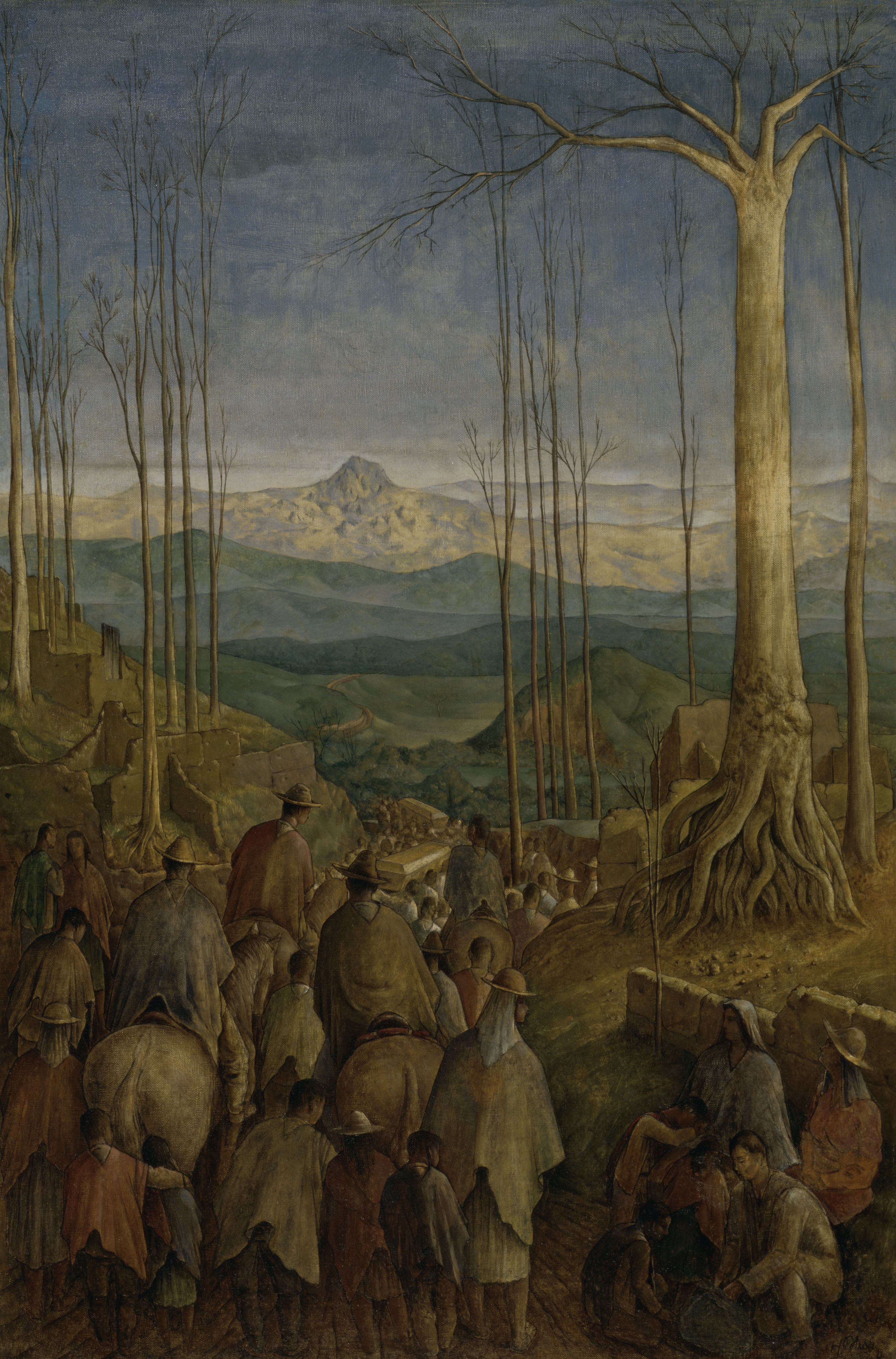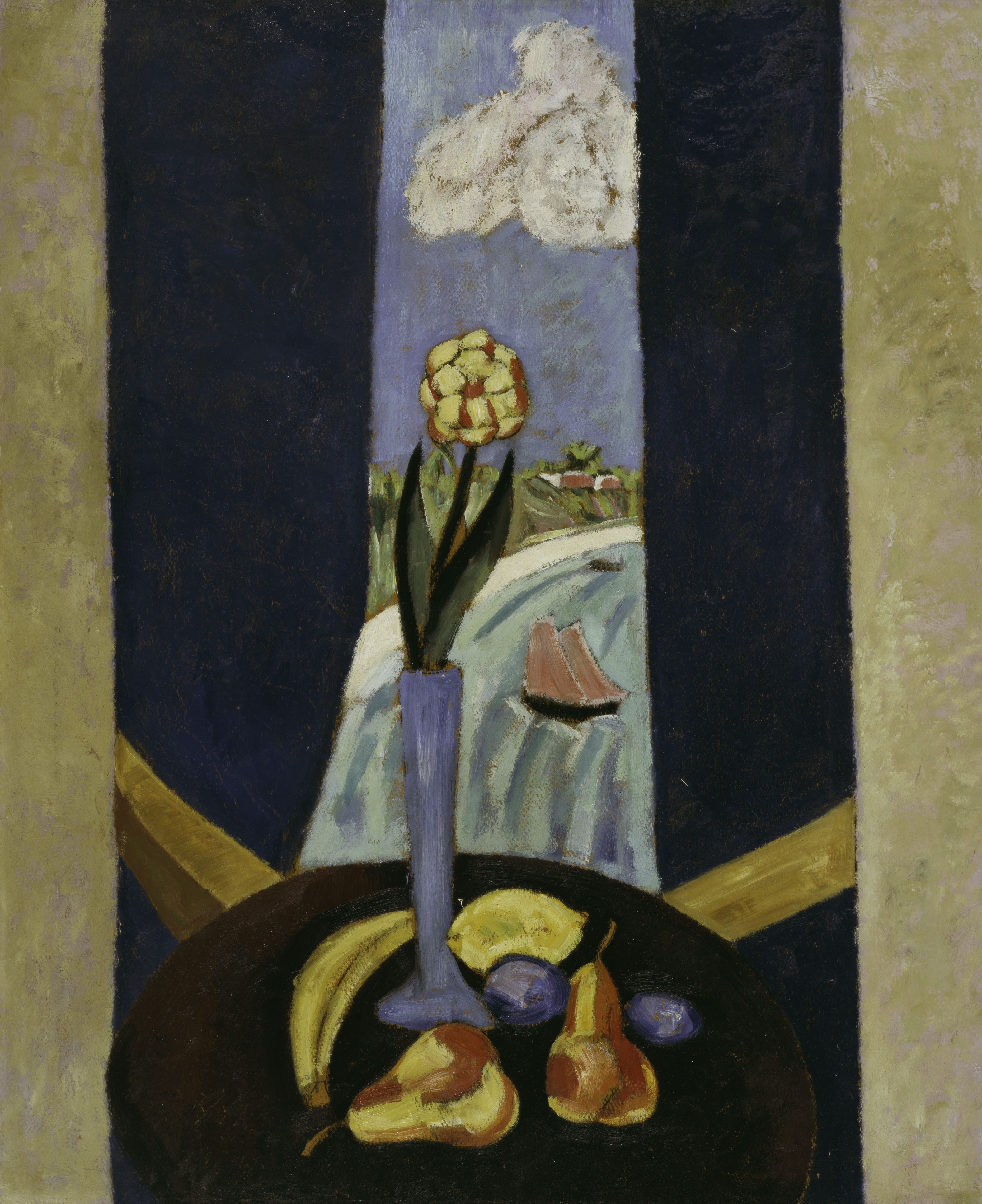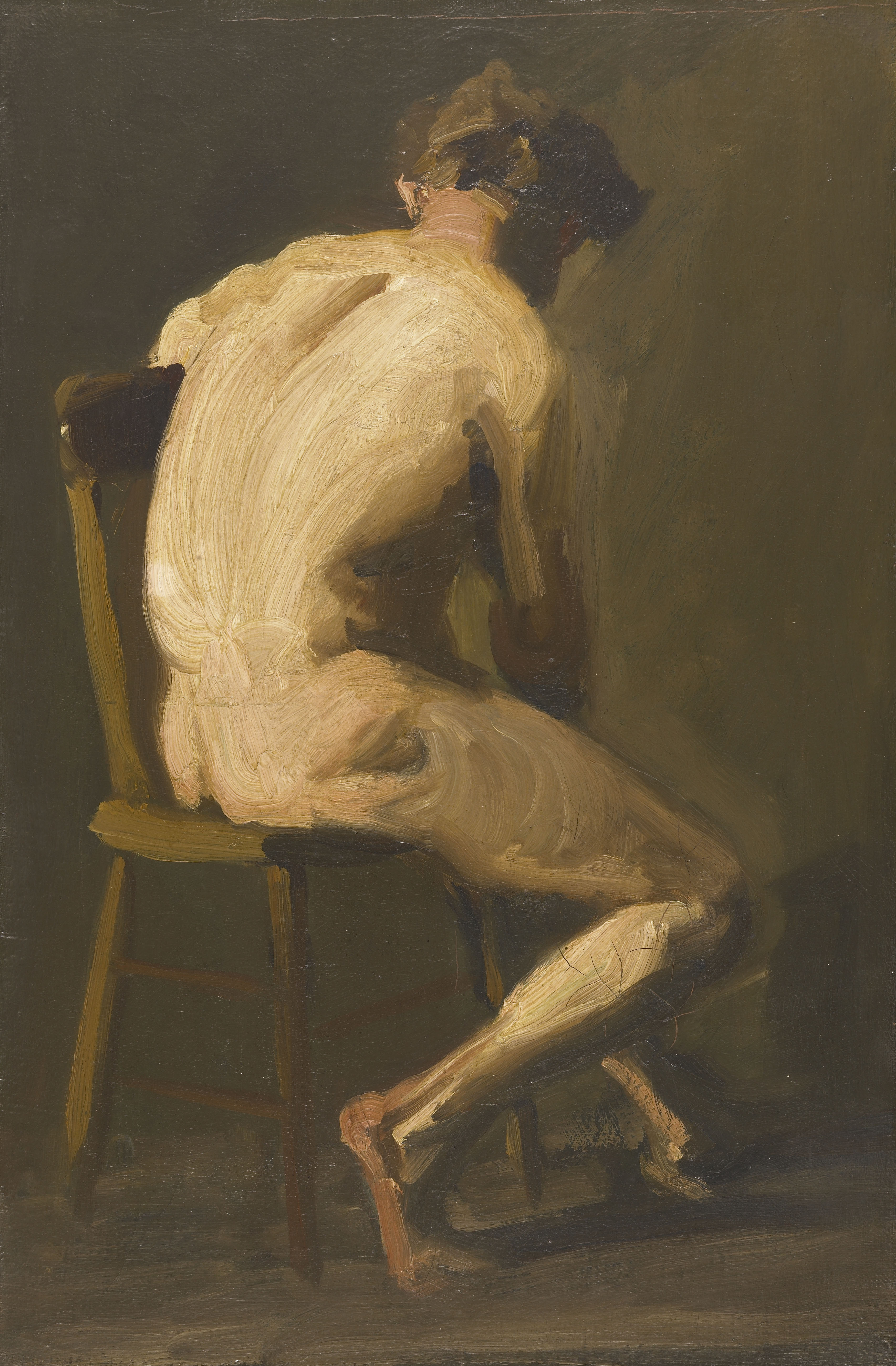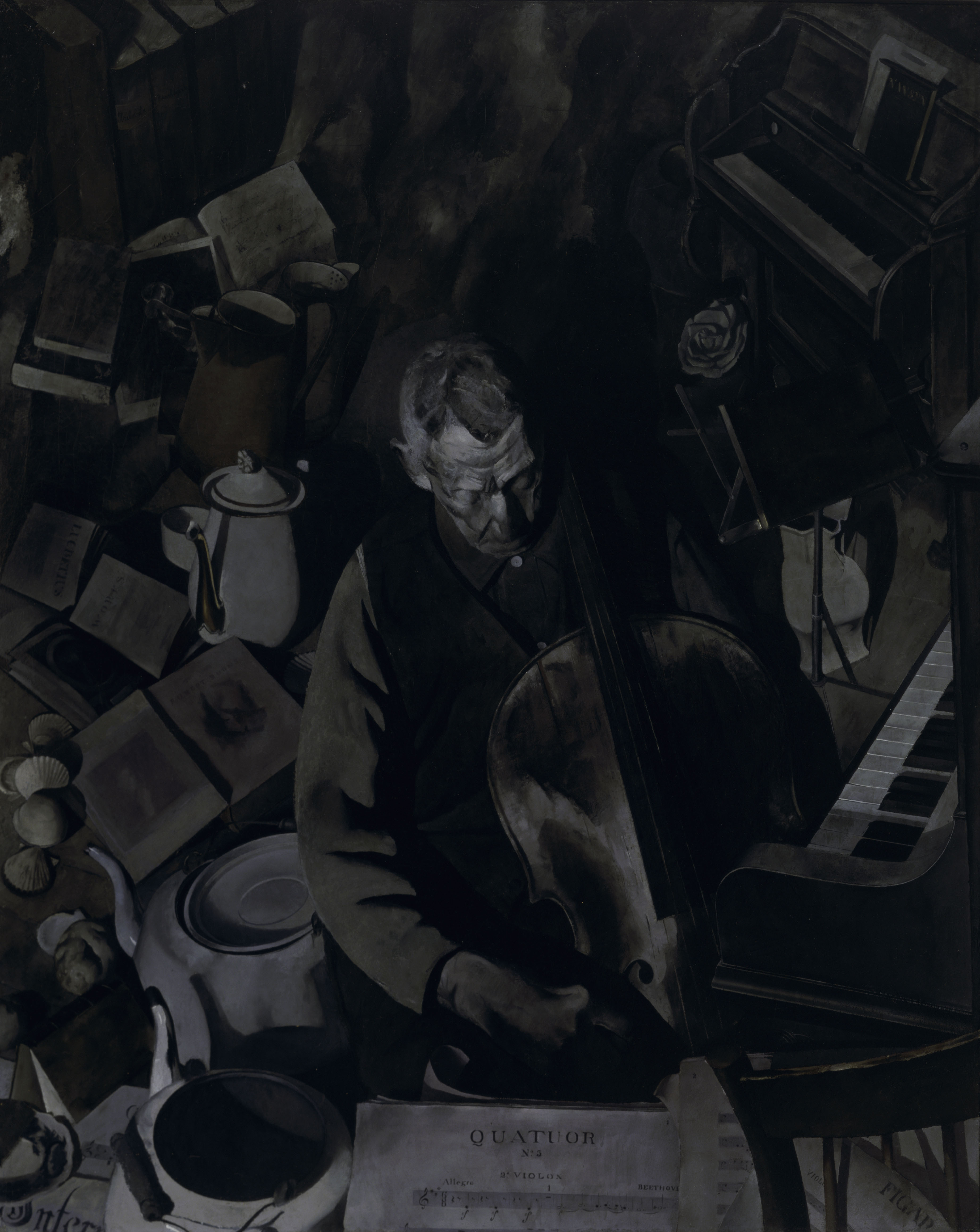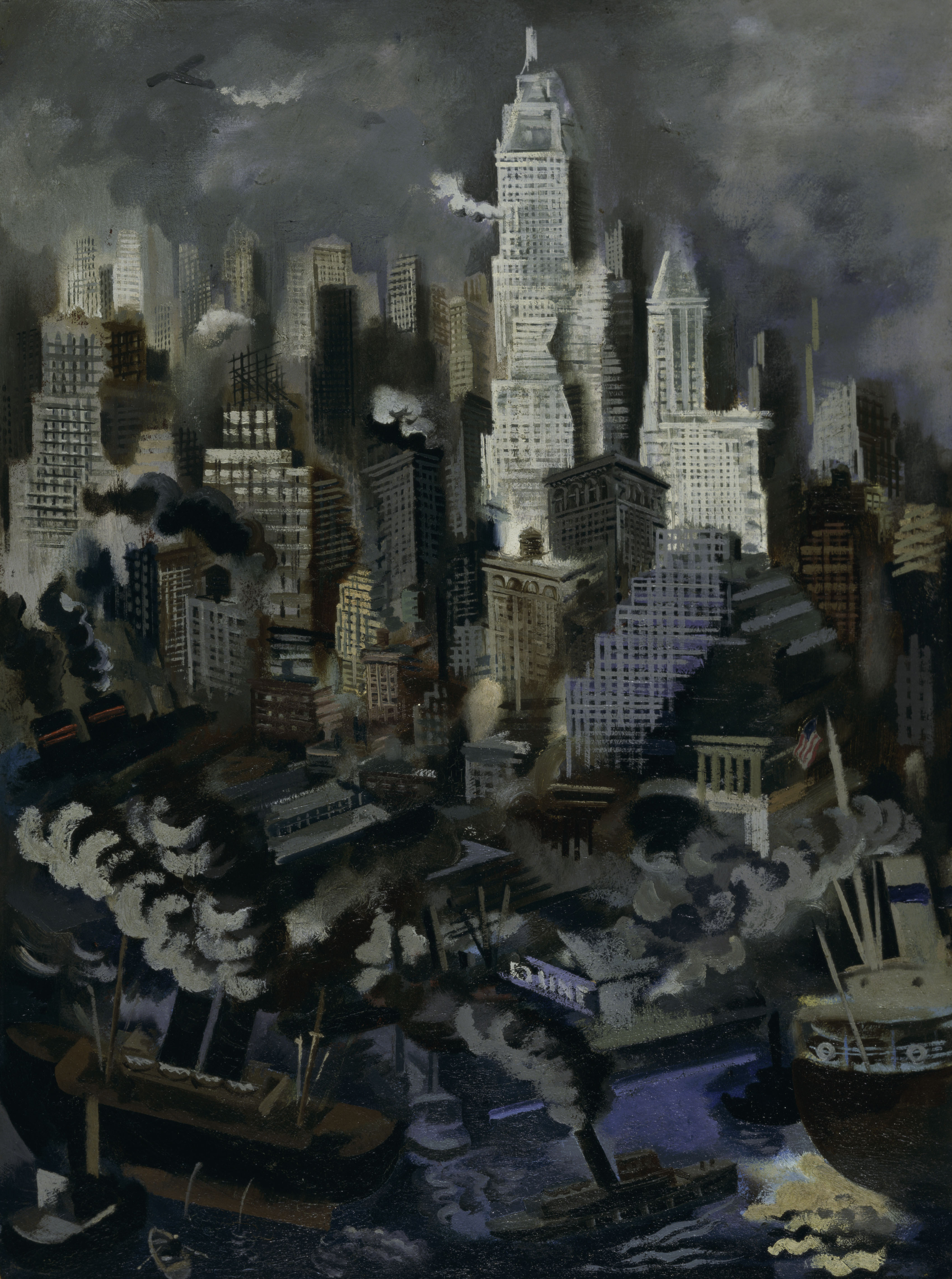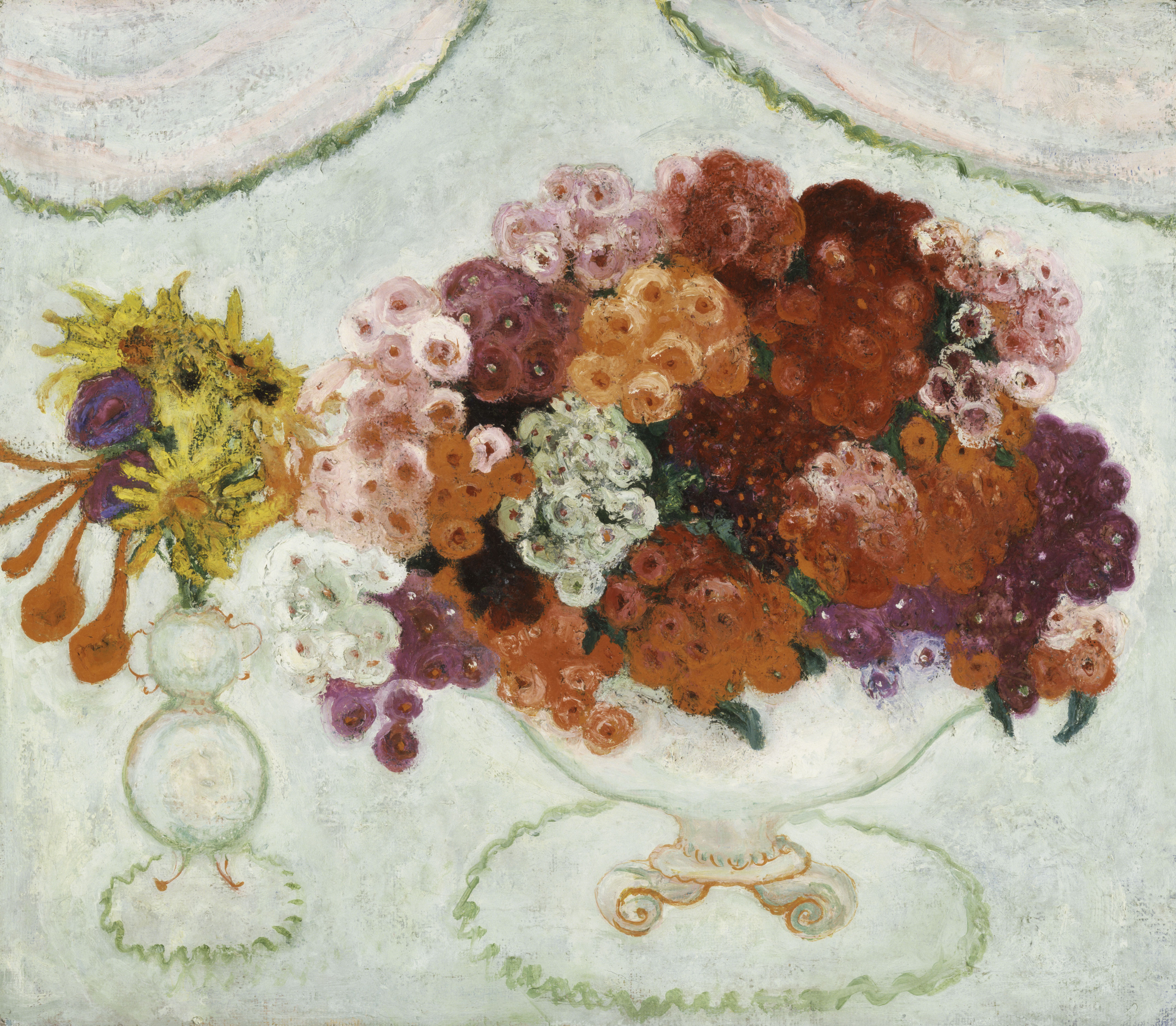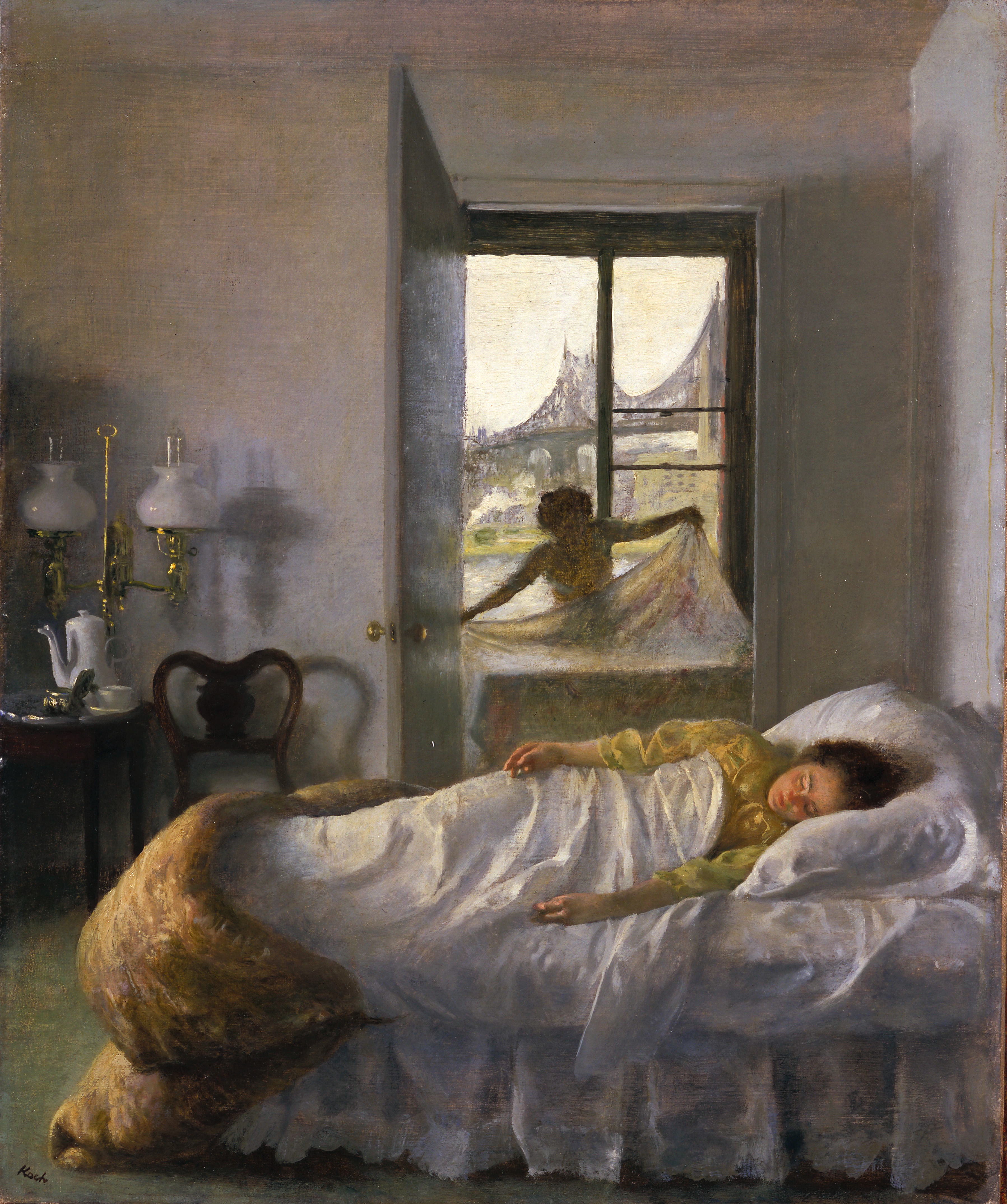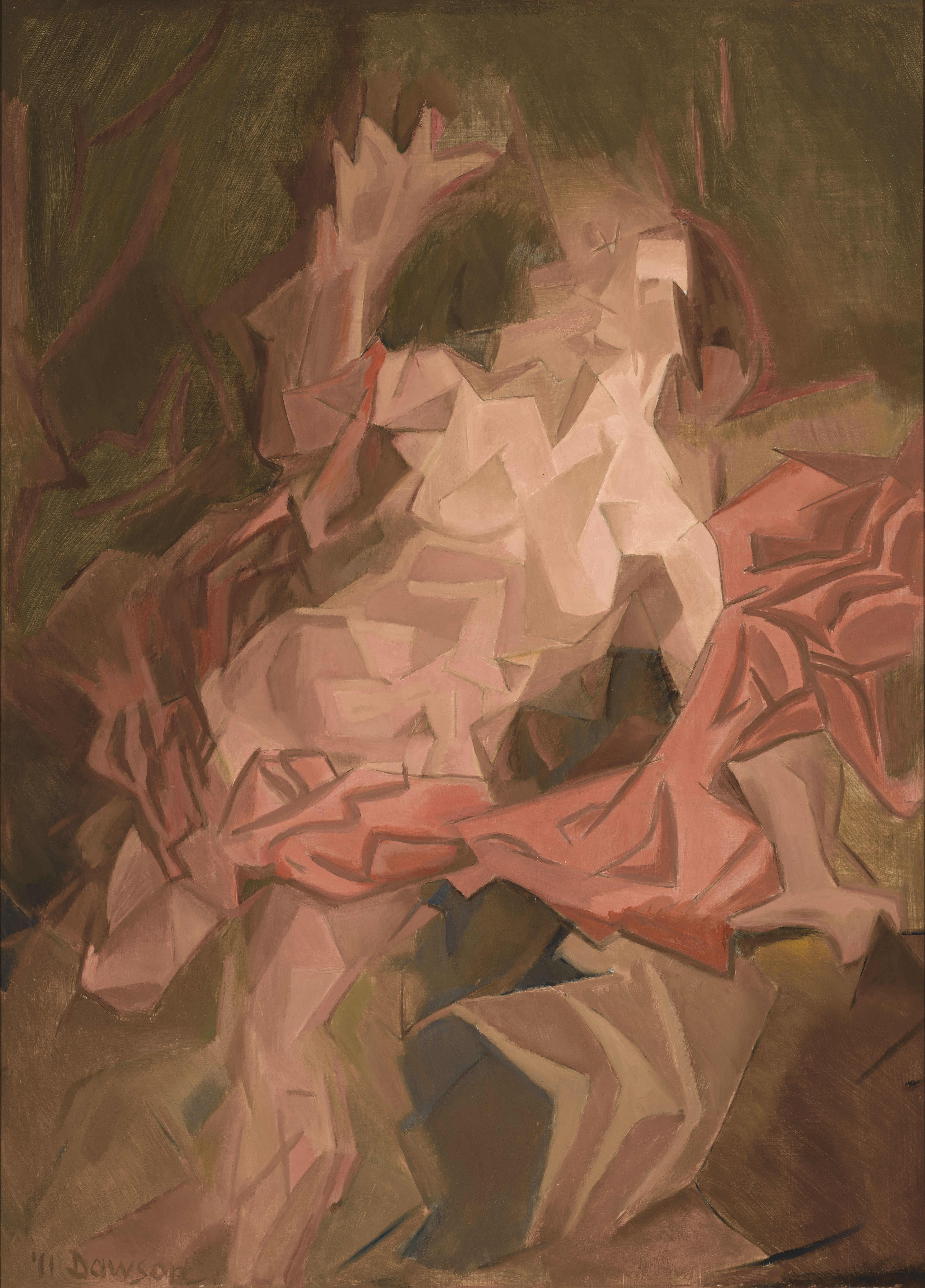Study, New York
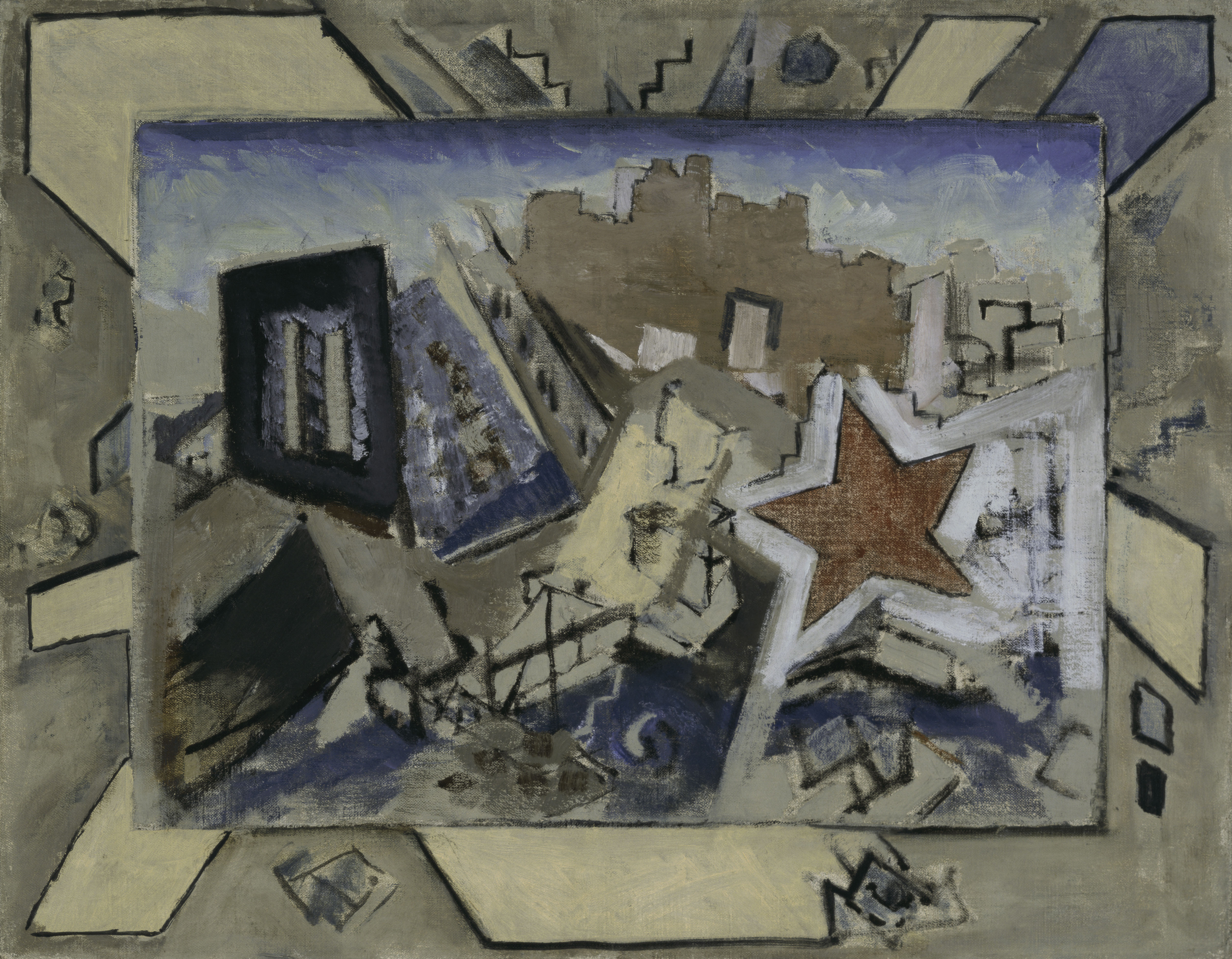
How does the changing city skyline make you feel?
For Marin, New York’s geometric architecture and kinetic street life epitomized the abstract principles of modern European art movements. The vantage point in this picture, looking from Brooklyn across the East River toward lower Manhattan, was popular with artists who could juxtapose the 19th-century Brooklyn Bridge with the city’s 20th-century skyscrapers. Marin’s scene boldly declares the spiritual dimensions of the entire urban landscape on both sides of the bridge.
